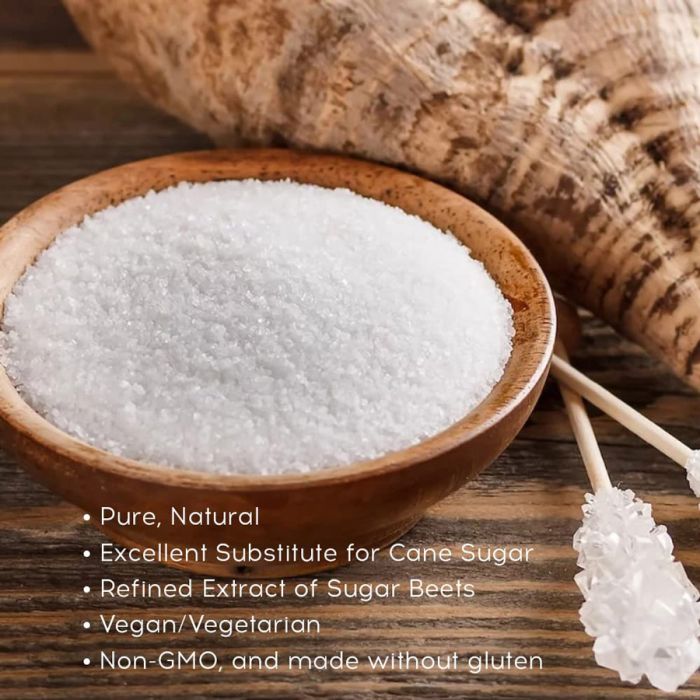Learning about beet sugar vs cane sugar can help individuals decide which suits their needs better.
Learning about beet sugar vs cane sugar can help individuals decide which suits their needs better.
Blog Article
Discover the Uses and Advantages of Beet Sugar Vs Cane Sugar in Your Daily Diet Regimen
Exploring the unique top qualities of beet and cane sugar reveals more than just their sweetening capabilities; it highlights their special effect on health and culinary arts. Beet sugar, recognized for its refined flavor, is frequently preferred in delicate desserts, whereas cane sugar, with its hint of molasses, adds richness to robust meals. Each kind holds its own nutritional profile and glycemic implications, inviting a deeper understanding of their functions in a well balanced diet plan and sustainable usage methods.
Beginning and Manufacturing Procedures of Beet and Cane Sugar

The unique environments and dirt kinds required for growing sugar beetroots and sugarcane add to differences in their cultivation techniques and geographical distribution, affecting the business economics and sustainability of their production. beet sugar vs cane sugar.
Nutritional Contrast In Between Beet Sugar and Cane Sugar
In spite of stemming from various plants, beet sugar and cane sugar are nutritionally really similar, both primarily being composed of sucrose. Each offers about 4 calories per gram, equating to roughly 16 calories per tsp. Structurally, both sugars are composed of approximately 99.95% sucrose, with marginal amounts of various other compounds like moisture and trace element, which do not substantially alter their dietary profiles.
Eventually, when picking in between beet sugar and cane sugar based upon nutritional content alone, both deal similar advantages and disadvantages as they are basically types of the same particle-- sucrose, providing quick power without various other nutrients.
Effect On Health: Glycemic Index and Caloric Material
Exploring even more right into the results of beet sugar and cane sugar on health, it is crucial to consider their glycemic index and calorie web content. Both sugars are classified as sucrose, which consists of sugar and fructose. This make-up leads them to have a comparable influence on blood sugar levels. The glycemic index (GI) of both beet and cane sugar is around 65, classifying them as high-GI foods, which can create quick spikes in blood sugar levels. This is a critical facet for people taking care of diabetes mellitus or those attempting to support their energy levels throughout the day.
Each type of sugar contains around 4 calories per gram, web link making their calorie material equivalent. For those checking calorie intake, especially when taking care of weight or metabolic wellness problems, comprehending this equivalence is crucial (beet sugar vs cane sugar). Excessive consumption of any high-calorie, high-GI food can add to health and wellness issues such as excessive weight, heart illness, and insulin resistance.
Environmental and Economic Considerations of Sugar Manufacturing
Beyond health and wellness effects, the production of beet and cane sugar likewise raises substantial environmental and financial worries. Sugar beet cultivation often tends to need cooler climates and has a reduced geographical footprint contrasted to sugar cane, which thrives in exotic regions. Both plants are intensive in terms of water use and land profession, possibly leading to deforestation and water shortage. Economically, the worldwide sugar market is very volatile, affected by modifications in worldwide trade plans and aids. Lots of countries incentivize sugar manufacturing through financial backing, skewing market value and impacting small farmers negatively.
Additionally, using pesticides and fertilizers in both beet and cane sugar growing can cause dirt destruction and air pollution, more influencing biodiversity and local water bodies (beet sugar vs cane sugar). The option between growing sugar beet or cane frequently rests on neighborhood ecological conditions and economic aspects, making the sustainability of sugar manufacturing an browse this site intricate problem
Culinary Applications and Flavor Differences
While the ecological and financial facets of sugar manufacturing are indeed substantial, the option between beet and cane sugar additionally influences culinary applications and taste profiles. Beet sugar, acquired from the sugar beet plant, is understood for its remarkably neutral preference.
Cane sugar, removed from sugarcane, commonly retains molasses traces, which pass on a distinct richness and deepness. This small molasses flavor boosts the complexity of baked items, sauces, and sauces. It is especially favored in products where a sugar undertone is wanted, such as in brownies or gingerbread. The minor variant in moisture material between beet and cane sugar can impact the structure and visit this site right here uniformity of recipes, making cane sugar a preferred option for specific recipes that benefit from its one-of-a-kind residential properties.

Verdict
Finally, both beet and cane sugar have distinctive origins and production processes, offering comparable nutritional profiles with slight distinctions in salt material and flavor. While their influence on wellness, particularly relating to glycemic index and calories, is comparable, the choice in between them commonly comes down to environmental, financial variables, and details cooking needs. Comprehending these aspects can lead consumers in making informed choices that line up with their health objectives and flavor preferences.
Report this page